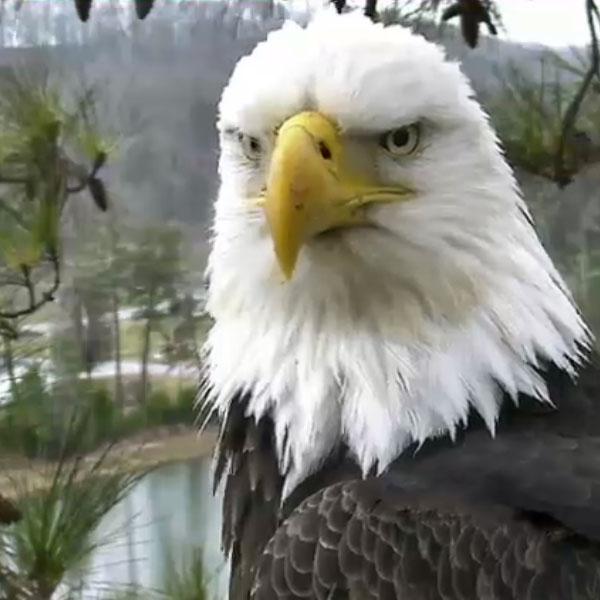Nearly 10 years ago, a pair of visitors arrived at the Bear Trace at Harrison Bay golf course, and each year, like clockwork, they return. If only golfers were as loyal.
 Since 2010, Harrison Bay State Park near Chattanooga, Tennessee, has been a nesting site for a pair of bald eagles and the many offspring they have hatched and reared there. That, in and of itself, is nothing unique. Bald eagle numbers are on the rise nationwide after spending years on the U.S. Fish and Wildlife Services list of threatened and endangered species.
Since 2010, Harrison Bay State Park near Chattanooga, Tennessee, has been a nesting site for a pair of bald eagles and the many offspring they have hatched and reared there. That, in and of itself, is nothing unique. Bald eagle numbers are on the rise nationwide after spending years on the U.S. Fish and Wildlife Services list of threatened and endangered species.What is unique are the lengths state officials in eastern Tennessee have gone to help educate people on the ways of bald eagles.
Through the miracle of technology, park and golf course officials at the state-owned layout on the banks of the Tennessee River have worked to educate people on the nesting habits of bald eagles and offer insight into the remarkable comeback of this once endangered species with the help of an elaborate system of cameras, microphones and cables that help stream the sights and sounds of life in a nest 100 feet above the golf course to viewers around the world.
After technical issues with the camera derailed those efforts last winter, the infamous if not famous Harrison Bay Eagle Cam is up and running again this year.
Once the birds were on the nest, federal regulations made it impossible to go up and make repairs and get the cam online last year. According to the U.S. Fish & Wildlife Service, that would have constituted harassing the eagles, an offense punishable by fines of as much as $250,000 or two years of imprisonment. The fine doubles for an organization.
"We can't really say why the camera stopped communicating," Bear Trace superintendent Paul Carter said in his blog, "but we believe it was a wiring issue going up the tree."
Elliot and Eloise, so named by Carters daughter, Hannah, had been nesting in a tree above the ground at the golf course when Eloise failed to return last winter and a new female showed up in her place, and hatched a new generation of eaglets.
This year, Elliott and Eloise are back and making repairs to the nest. Two other females, one of which was around last year, also have been spotted in the area debunking a popular belief that bald eagles choose a single mate for life.
Angelo Giansante, a ranger at nearby Hiwassee/Ocoee State Park, and a former Army ranger, had the duty of shimmying up the tree to retrieve the camera and reinstalling it after repairs had been made, along with two other cameras, including a new one that will be used as a backup if needed. Matt Vawter, a ranger at Harrison Bay State Park, is the IT person who built the network and web site that brings the world of bald eagles to computer screens around the world.
Thanks to the USGA and the fundraising efforts of the Friends of Harrison Bay, the park has been able to upgrade video equipment each year. The program's popularity has grown each year, with hundreds of viewers checking in from around the world to watch from the time eggs are laid to the eaglets hatching and eventually leaving the nest - about five to six months after hatching or when the adults tire of feeding them, according to the U.S. Fish and Wildlife Service.
Historically, Eloise has laid eggs in early winter and eaglets have hatched in late winter or early spring. According to the National Eagle Center, bald eagles can live up 20 years in the wild, but as many as 80 percent die before age 5.

